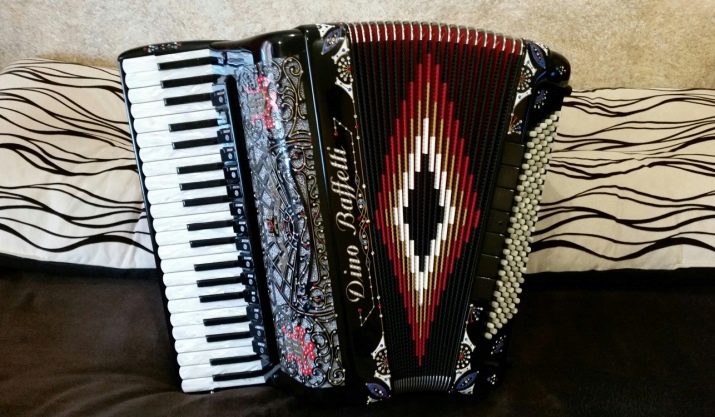What is an accordion and how to choose one?
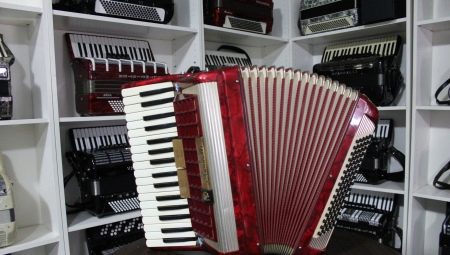
If you imagine in your head - without much thought - a video about France, somewhere against the background of beautiful views and inspiring landscapes, an accordion will play. A musical instrument with an expressive sound and a beautiful visual range (it's nice just to look at a performer who controls a manual harmonica) has a difficult fate. But today it does not need advertising: people love its sound, children and adults play on it, venerable instrumentalists create outstanding concert programs on it.
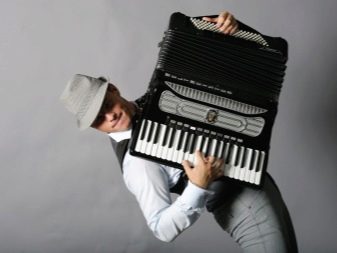
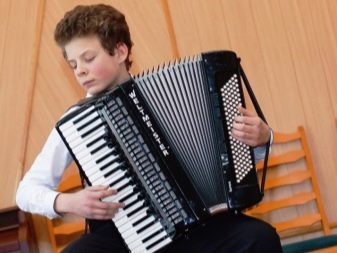
What it is?
The accordion is called the button accordion's brother, children even confuse these instruments, they cannot immediately tell how they differ from each other. Instead of the right keyboard, the button accordion has a button - that's the main difference. The accordion is an academic, chromatic wind instrument. Its device is a modernized harmonica with piano keys on one side and round buttons on the other. With the left hand, the accordionist plays chords and bass or low notes. And on the right, in addition to the keys, there are register regulators.
What the tool consists of.
- The two accordion sections are connected by bellows. On the right is a box with a piano keyboard row. Their number, keys, is different, if the instrument is full, there will be 41 of them.
- Inside the product are valves, registers and resonators. Registers are needed to quickly change timbre values. The sound holes, which coincide with the resonator holes, are opened by a special valve system. The resonators have “voice bars”.
- The left keyboard usually has 5 rows (rarely 6). Two rows are represented by bass buttons, while the others are ready-made chords - minor, major, and seventh chords. A traditional accordion has 120 buttons.
- Fur is cardboard, special fabric, high-quality leather, thick paper and glue. It can be reinforced with steel linings.
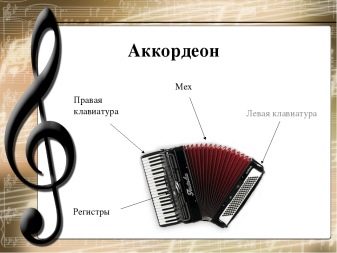
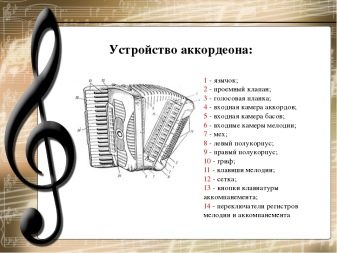
What distinguishes this instrument from other harmonics is the simultaneous sounding of many reeds. They can be octave, fifth, drill, spill and piccolo.
Only a five-part accordion is equipped with quint reeds, piccolo is available only in a four-part.
Origin story
Outwardly, the instrument really looks like a button accordion, and if you don't look closely, the piano keyboard is not striking in the first seconds. Initially, it is the general appearance, the body, and also the way the musician holds the instrument that is noticed.
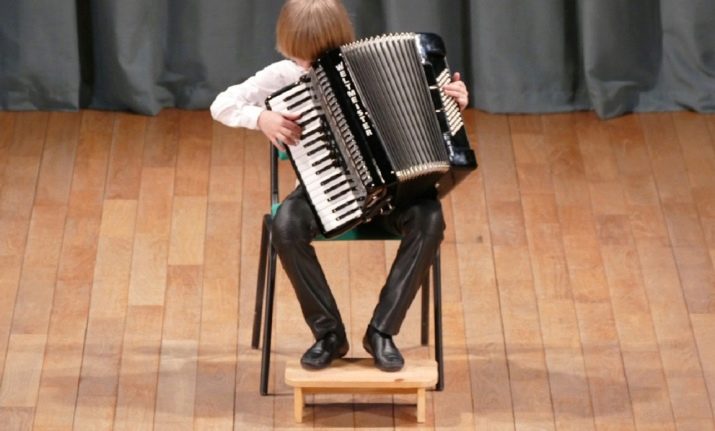
It is logical that the history of the origin of this instrument should be interesting. And it began, probably, from the Ancient East, it was there that the principle of reed sound extraction was first used. And he possessed an instrument called "sheng". This is where the origins of the accordion come from. And the instrument acquired its usual appearance thanks to two talented craftsmen: the German watchmaker Christian Buschmann and the Czech inventor Frantisk Kirchner. And this is not at all a duet of masters, the specialists worked independently of each other.
Bushman did this: his desire was to simplify the tuning of the organ, and it was embodied in such a simple device as a tuning fork. The master equipped a tuning fork, which looks like a small box, with a metal tongue. When the craftsman blew air into the tuning fork, the tongue became sonorous, it revealed the tone of a particular pitch. Then the author went further, he added fur to the device, and this air reservoir made the design even more perfect. And in order to exclude the simultaneous vibration of the reeds, Bushman made them valve ones.
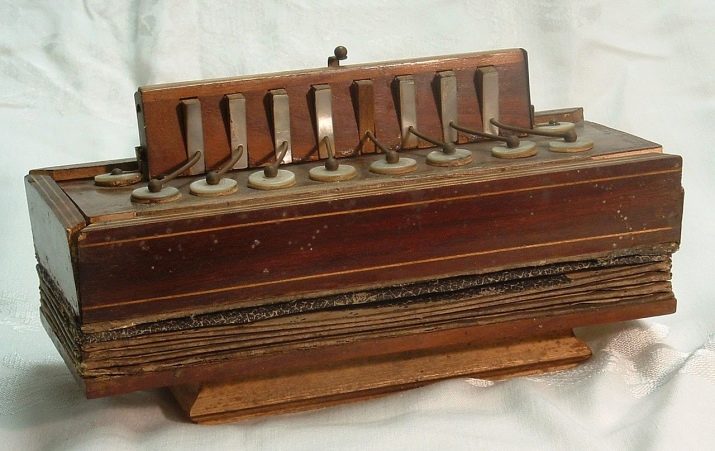
In 1821, a German master invented what might be called the prototype of the harmonica. And he gave it the name "aura". What is most striking about this story is that Bushman came up with such a device as a 17-year-old boy.
The Czech organist Frantisek Kirchner worked in a completely different place, he worked at the Russian royal court and is passionate about his musical vocation. How else to explain the fact that František comes up with a new system of tongue strips, which will become the base of the manual harmonica. Yes, such a description is not 100% comparable with a modern instrument, but the principle of sound extraction is the same - a metal plate vibrates under a stream of air, the action of pinches and presses.
Another name associated with the history of the instrument is Cyril Demian. This is a Viennese organ master, who diligently improved the instrument and, finally, gave it a fundamentally different look. Demian was able to bifurcate the body, on each part he placed a keyboard for the hands, and articulated the halves with bellows. So a musical instrument appeared in the world, which was already more similar to a modern accordion.
And the name is quite obvious: a chord is associated with each key.
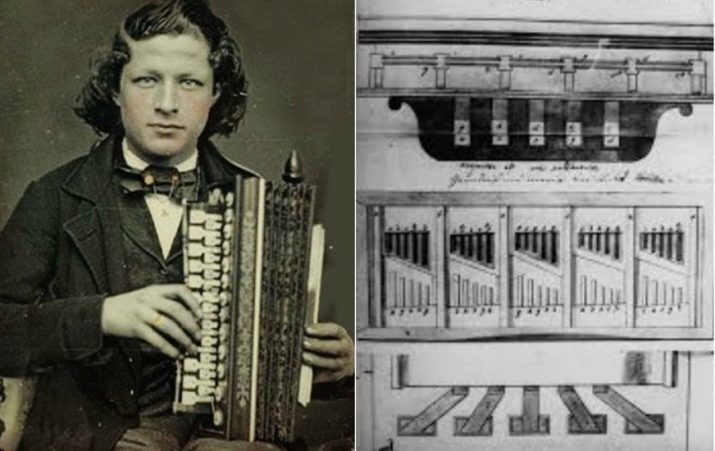
Yes, the same Kirill Demian also created the name of the instrument. V In May 1829, he officially presented it, became the owner of a patent and did the main thing - contributed to the mass production of accordions.
Well, then the story goes to the Italian coast. There, in a village near Castelfidardo, the farm laborer's son Paulo Soprani buys an accordion from a wanderer monk by the same Cyril Demian. In 1864, Paulo, with the support of joiners and carpenters, opened an accordion workshop. Then it becomes a factory, which is already engaged not only in the release of the instrument, but also in its improvement. The Italians quickly fell in love with this lyric instrument, however, like, consider, the whole of Europe.
Well, the wave of immigration at the end of the 19th century helps the accordion find itself on the other side of the Atlantic and become not just a guest in America, but also confidently settle on the continent. Even there it was called by the easy nickname "piano on the shoulder straps." In the last century, in the 40s, Americans were already producing electronic accordions.
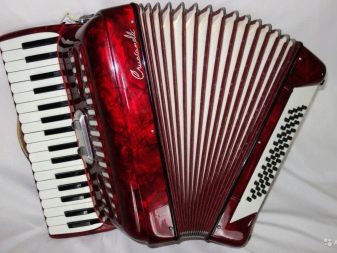
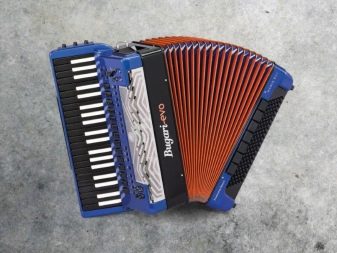
Sound features
The accordion sound is called silvery - and this is a very accurate definition of the sound of an instrument. He has a pleasant vibration, a colorful and melodious voice. Sometimes it seems that it sounds exactly like an organ, sometimes its sound becomes the polyphony of the whole orchestra. The registers that change its timbre color help the instrument to be known as a notable imitator.
The principle of sound extraction in an accordion is as follows: metal tongues vibrate freely under the action of an air jet. It, in turn, is formed due to the movements of the camera with bellows. And furs, their very presence - the great value of the tool. Mechs control the sound, and this is no exaggeration. They affect the color of the timbre, make the sound softer, more transparent, coarser and harder.
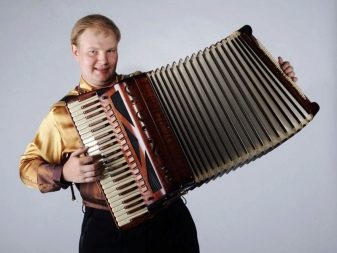

And experts also note the extraordinary dynamic flexibility of the instrument: if a piano, then it can be as soft as a feather, like an enveloping cloud, and if forte, then its piercingness can make you cry. In a word, such a range certainly affected the popularity of the instrument. It is still included in the ratings of the most demanded musical objects.
Noble, handsome, rich in his expressiveness and, what is especially pleasant, it is not very difficult to learn to play it.
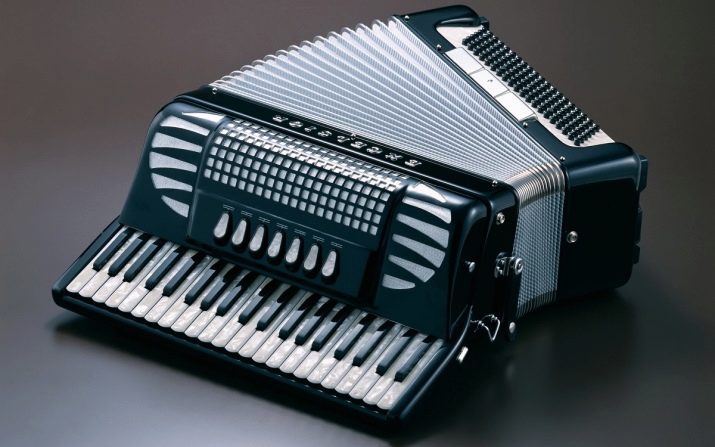
Species overview
The instrument is classified according to different indicators.
By keyboard type
The keyboard of the instrument can be piano and push-buttons. Let's consider the characteristics of keyboards.
Piano
Keyboard products are chromatic in terms of sound scale. The maximum number of keys that can be on such an instrument is 45. And this is enough to obey the performer even complex concert pieces. These accordions come in three, four, and even five voices. The instrument becomes multi-timbral.
Registers-switches allow on the machine to double sounds in octave and unison, which helps to change the timbre. And the keyboard instrument is inherent to play only with the presence of two shoulder straps - it is important to fit them correctly, the quality of the game depends on it.
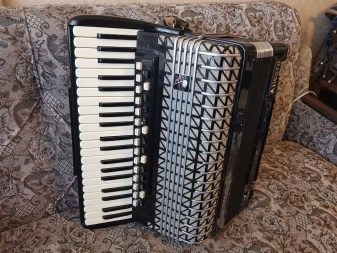
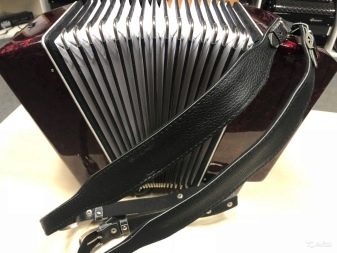
Push-button
These instruments are divided into chromatic and diatonic. To put it bluntly, the Russian button accordion is just a kind of button-like chromatic accordion. The keys in them are three-row and five-row. In the five-row, the first two will be auxiliary (these are the doubles of the notes that are in the other three rows).
In the traditional view, the accordion is just piano keys on one side, no push buttons. But it turns out that the button accordion is not just a relative of the accordion, but also its direct "heir".
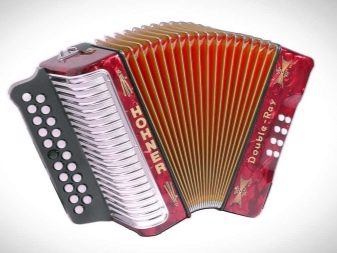
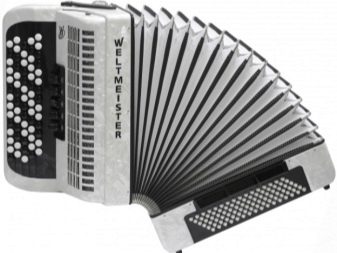
By left-hand accompaniment type
This system is ready-made and ready-made. The first one includes basses and ready-made chords, and the alternative system offers two at once, ready-made and optional, they can be changed with a special register.
Also, the instrument can be unison (the pitch is not controlled by fur dynamics) and bisonic (the direction of the fur movement affects the pitch). The division into chromatic and diatonic instruments is due to the following: chromatic instruments presuppose a scale in 12 semitones of the tempera system. Diatonic musical instruments are associated with a push-button keyboard scheme, their layout is limited to the musical range of the diatonic scale, that is, it does not require half-tone intervals.
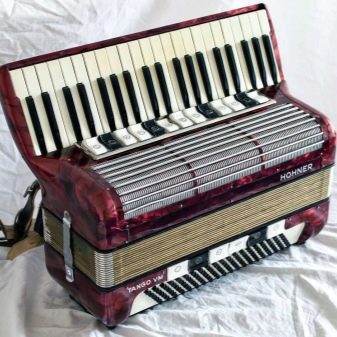
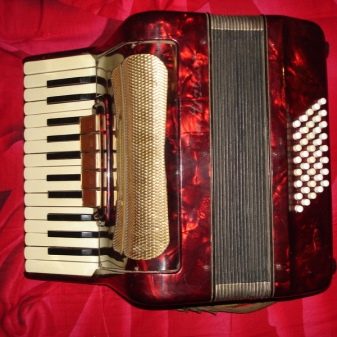
There are also hybrid instrument models with interesting potential and looks. But they, rather, are in the status of artifacts, in reality they are rarely used. Examples of such accordions: Tricitix, British Chromatic Accordion, Schrammel Instrument.
Dimensions (edit)
The most common type is called 3/4 (three quarters). It is lighter than a full-size instrument, has three voices, 20 white keys on the right, 80 bass elements and accompaniment on the left. Its range is two and a half octaves.
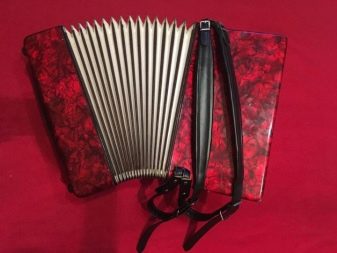
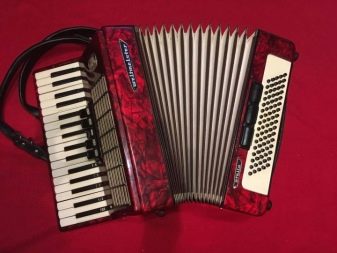
Other sizes of accordions.
- Very small - 1/8 and 1/4, mini accordions help preschool kids learn music. They are either one or two voices. 10-14 white keys on the right, and a rather short unregistered bass row. A little over two octaves, the range of such a simple product.
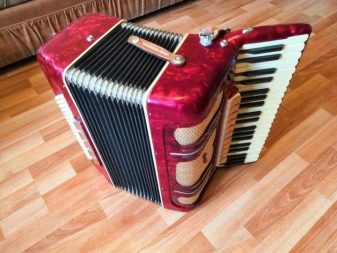
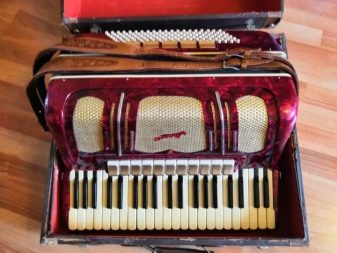
- Medium 1/2 or 2/4 - a device for children over 5 years old, schoolchildren up to 9 years old can also play on it. It weighs little, convenient, inexpensive - such an instrument is in great demand, because young accordionists of music schools begin their journey with it. The range of the instrument is limited to two and a half octaves, which is sufficient for initial training. It is more often a two-voice instrument with 16 white keys on the right, 3 or 5 registers (or even none at all), as well as 32-72 bass and accompaniment buttons.
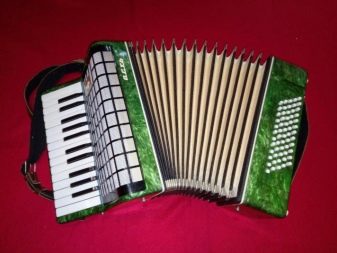
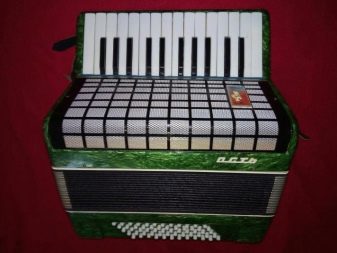
- 7/8 is already an instrument with three octaves, the addition of 2 white keys (versus the 3/4 product) and 96 bass. They can be three-part and four-part.
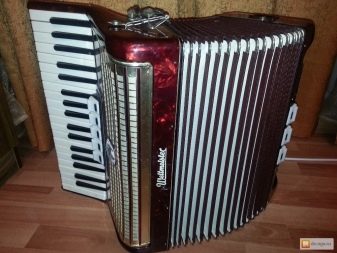
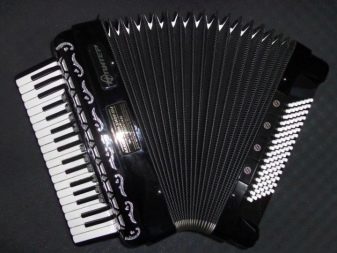
- 4/4 - full, large instrument, whose range is three and a half octaves. It is played by senior students of music schools, as well as adults. The instrument has 24 white keys (there are models with 26), four voices (11 or even 12 registers). It is a common concert instrument.
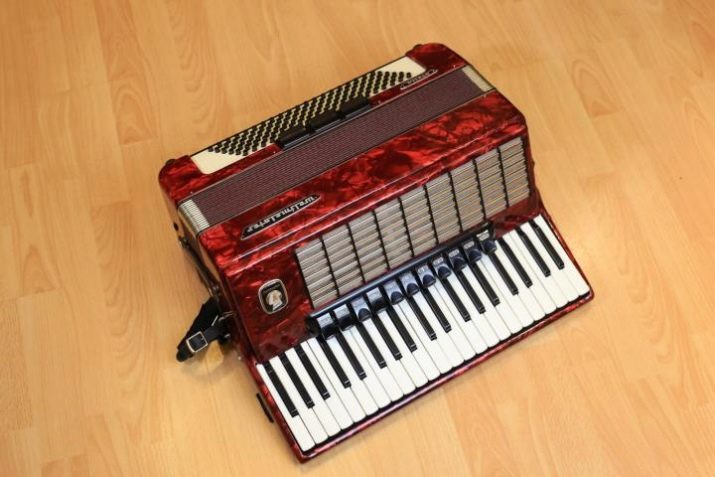
The digital accordion is increasingly preferred by the professional musician today. In teaching, such a modern product is inconvenient to use, and there is no need, but for a concert it is ideal. In terms of dimensions, it compares favorably with a full traditional accordion, the tuning can be quickly lowered or raised, there is no need to tune the instrument. He is not afraid of humidity and temperature jumps. The buttons on the right keyboard can be rearranged in it.
It even has a built-in metronome, USB output, volume control and more.
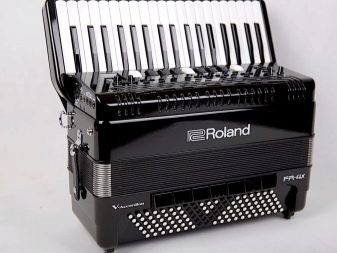
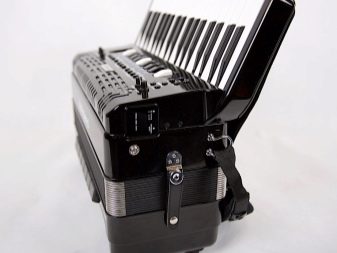
Top Models
Ratings are thankless, but they help coordinate choices. The following models are worthy of being on the list of the best tools.
- Scandalli Super VI. Italian accordion with a plastic case, and inside - precious wood and a soundboard made of duralumin. Thanks to the microphone systems, you can engage in frequency control. The instrument is four-part, very beautiful, weighs 11.5 kg. Many call it the best classical accordion.
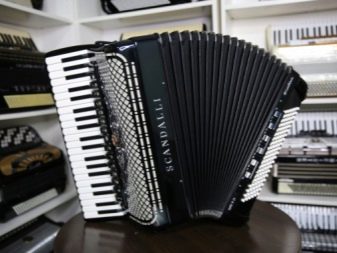
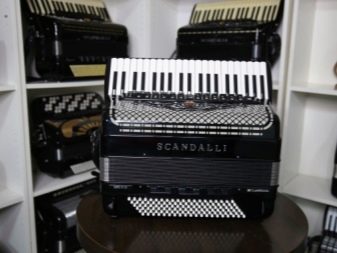
- AKKO "Masha". The model was invented especially for the accordionist Maria Vlasova. In the case, where there should be 41 keys, 45 of them were made (each key was reduced by 2 mm). The instrument is a ready-to-select one, four-part, very comfortable to play. The main disadvantage is one - it weighs 14 kg, which is not suitable for everyone.
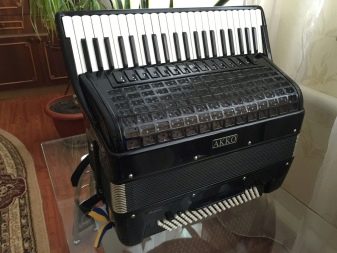
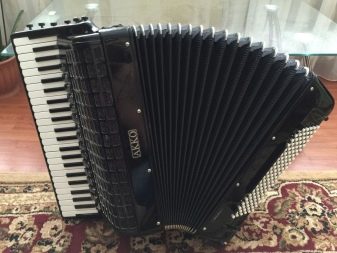
- Weltmeister Saphir 41/120 / IV / 11/5. A professional instrument made of high quality wood with a rich sound. Its pride is its very reliable branded belts. Has excellent dynamics of bellows, dense sound, includes a hard case.
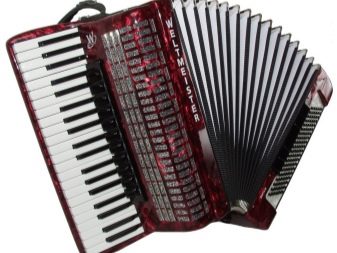
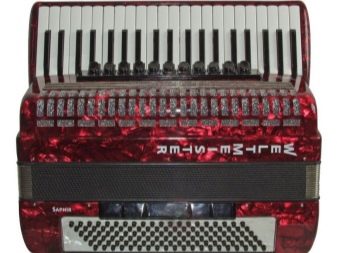
- Jupiter 3/4. This instrument has a reference sound. It has 3 voices and 7 registers. Suitable for both young musicians and older performers. It weighs only 9 kg, which means you can play on it for a long time and without fatigue.
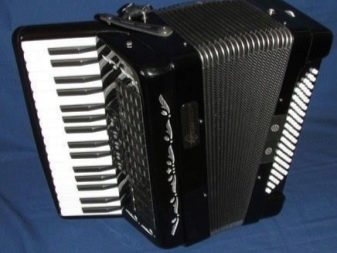
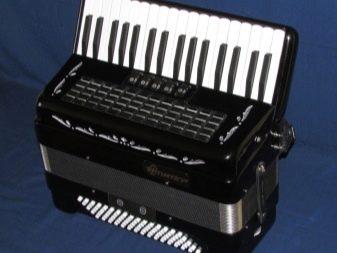
- Aurus JH2005. Weighs even less, 8 kg. Also suitable for older students of a music school and adult musicians. 5 registers (right), 3 voices create a rich range of his playing.
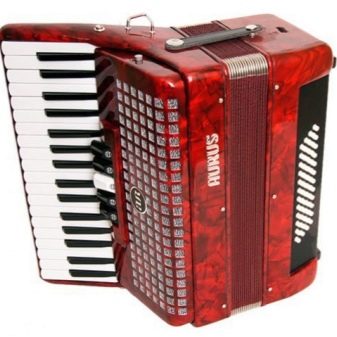
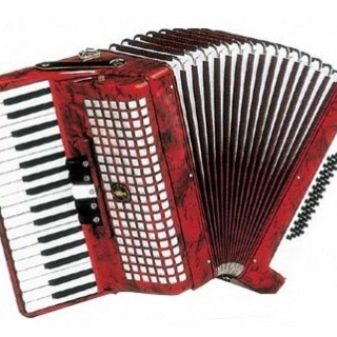
Of the digital models, the most famous are the Roland instruments.
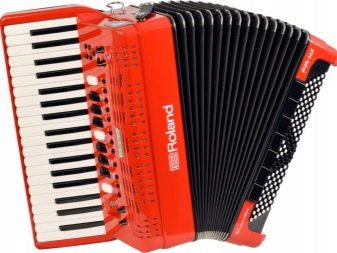
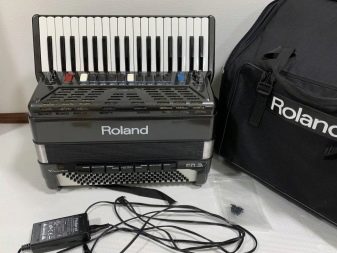
If they are looking for an instrument for a child, it is not necessary to purchase a new and expensive one, but it must be convenient. Models of French, Finnish, domestic brands compete with each other with dignity, and it may not be worth trying to find a leader. Although some may think that accordions are not made better than in Germany. But the main thing is the reputation of the plant or company, suitable weight and size, affordable price and compliance with the goals.You can learn on modest models, but you can even fork out for a concert instrument.
Components and accessories
Accessories include shoulder straps (today their choice is extremely large), cases and cases, bags, microphones. Components include melody and bass half-cases, valves and linings, furs and accessories. Before using the tool, you need to know all the rules for caring for it: how to put it (on its legs), what to store, what parts are afraid of dampness, and so on.
Then the components will not have to be changed soon, or maybe not at all.
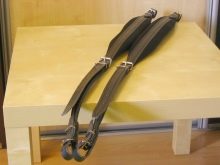
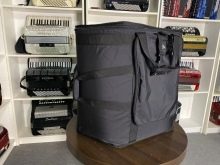
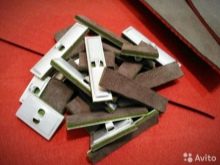
Nuances of choice
Choosing a tool means finding one that fits most of the criteria. Let's consider what these criteria are.
- Suitable in size. You need to check this when buying. There should be no discomfort when playing.
- Entering the budget. If this is a learning tool, you can buy it "hand-held", especially since you can easily find a high-quality accordion from a well-known manufacturer. New is expensive.
- General condition, presence of defects. If the tool is purchased used, it is chosen with particular scrupulousness. It is good if at the time of inspection there is a person who understands accordions nearby, who can see the pros and cons. Significant disadvantages - either immediately "not" from the buyer, or a large discount covering repairs.
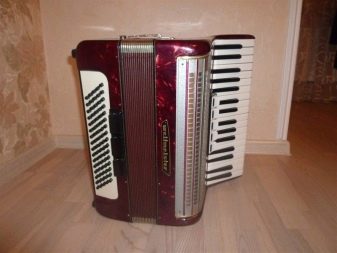
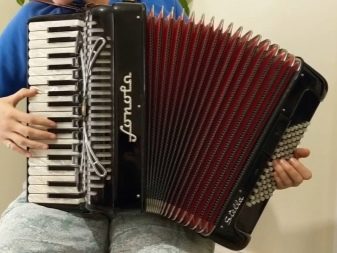
You need to inspect the instrument on the spot, because purchasing accordions via the Internet, without the option to check the condition - the risk of buying a "pig in a poke". It will be easier with new musical products, although you definitely need to try on them and make sure at least that there is no visual defect.
Customization
But in the case of tuning, the Internet can be the best assistant: there you can find a special professional tuner-tuner. It is suitable for both experienced musicians and beginners. In the instructions and the menu, everything is clearly laid out - if you follow them, then even without professional help you can configure the tool. Otherwise, it is better to turn to a good accordionist: a beginner musician may not be able to cope with the tuning or have doubts about the quality of the work done.
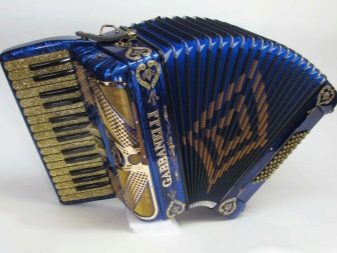
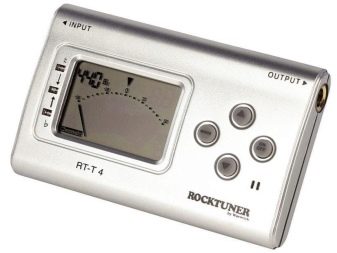
Technique of the game
The first thing to start with is getting to know the instrument itself, its design, and its components. You need to understand how the keys work, what the furs can do, how the belts are put on and adjusted.
What to do next.
- The instrument is taken in the hands and fastened with straps so that its backside fits snugly against the player's chest. The musician's left hand will move horizontally and vertically, while the right hand will only move vertically. There should not be any hindrances, inconveniences in the physical sense during the game.
- You can play while sitting and standing. It is also individual - as the performer is comfortable, so he does. You cannot stoop, while balance is lost, which negatively affects the game.
- It takes some getting used to the instrument. To balance the body during the game - too. Leaning to the side, forward is not allowed.
- Hands should be inserted into the belts as if a backpack is on a person's stomach: the keys and buttons are directed outward. Find the belt adjuster and remember its location. A back strap can also be used.


This is where it all starts, and then it's up to the game: searching for notes, studying musical rows, trying out playing with the movement of bellows.
First you need to learn to play on the left side, without thinking about the right at all. And you should go to the right only when, playing on the left, you don't want to look at your hands. It may seem unrealistic at first, but the learning process goes faster than a beginner thinks. They start with small pieces, simple exercises.
Attention! You cannot stretch and squeeze the instrument without first pressing a note or the special fur release button. Otherwise the reeds may be damaged and the accordion will become out of tune.
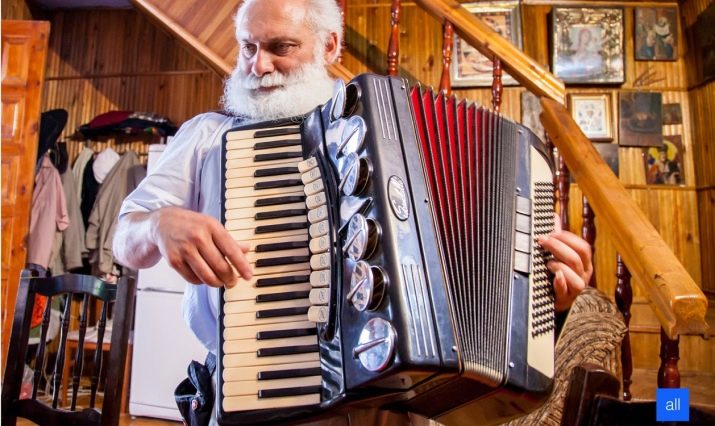
Interesting Facts
Italy, Russia and Germany are considered the best producing countries for concert instruments.
And also accordions:
- the most professional models can cost from 5 to 15 thousand euros;
- played in the hits of Bob Dylan, Billy Joel, The Beatles and the Rolling Stones;
- contribute to the rapid learning to play the piano (and not vice versa, as it seems to many);
- the famous brand Weltmeister from Klingenthal creates a third of the inhabitants of this town, and many of the workers themselves play the instrument perfectly.
In the USSR, the instrument flourished in the 30s, was used in jazz groups, including Utesov, and then underwent repression, like jazz itself, like the saxophone, for example. Fortunately, the popularity of the accordion is now safe.
